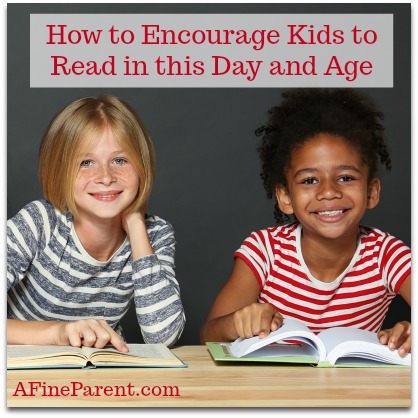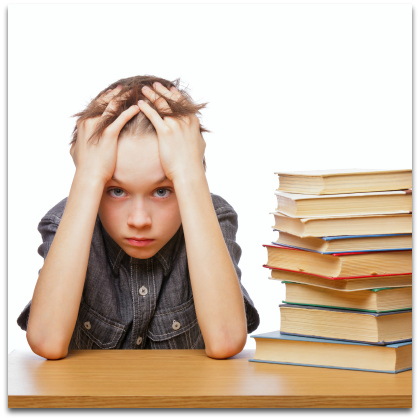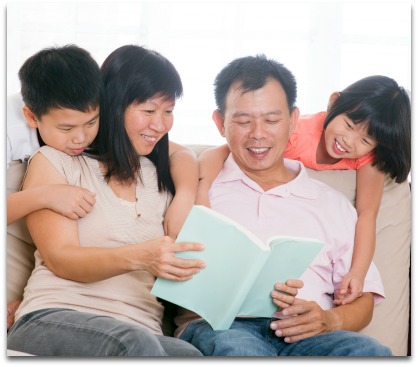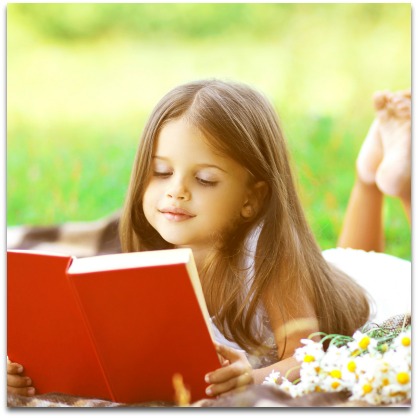 “Mom, I have better things to do now.”
“Mom, I have better things to do now.”
When the conversation is about reading, few words cut a librarian to the quick more efficiently. My 13-year-old son and I had first been talking about screen time limits. He had been expressing his thoughts calmly while I mentally congratulated myself on how I was handling this touchy conversation.
It went downhill when I shared my hopes for better use of his time than first-person shooter games and YouTube. Then came his comment about reading.
“I have better things to do.”
I stood like Wile E. Coyote who has been hit by an anvil but doesn’t realize it yet – mouth agape, eyes wide and uncomprehending. I must have looked stunned, because he repeated that sentence for me. Slowly.
As I looked into my son’s face, this kid who’s been steeped in the magic of books his entire life, my heart sank. I pictured the decline of his reading as the slamming of all those doors that my husband and I tried so hard to open for him.
Then I woke up and remembered he’s just turned thirteen – the game’s not over yet.
Others have written about the power of reading to provide countless perspectives beyond one’s own limited view on the world. The doors we opened through stories were those of background knowledge, and empathy for experiences beyond his own.
Readers were lucky, we assured him, for they were the ones who lived hundreds of lives instead of just one. He remained unmoved. So we compared literature to windows and mirrors – the windows to help him see others and the mirrors to understand himself. It was – and is – powerful stuff.
Despite the success of this campaign from preschool through elementary school, adolescence brings many changes. Teachers and parents of kids aged 12-17 report independent reading as an activity of choice declines sharply in middle school and continues to plummet throughout high school. And I now have a front row seat at this disturbing trend.
A 2014 research review about reading habits done by Common Sense Media shared some startling statistics. It showed that while 53% of 9-year-olds read for fun daily, by the time they reach 17, only 19% of students read by choice daily.
Smugly, I thought this would never happen to my kids. They were children of a librarian and naturally voracious readers. But how silly of me to assume they were beyond the reach of forces at work behind the decline of reading for pleasure.
So, I accepted it. Then I got to work.
I’ve learned that selling reading as a joyful activity to an average middle schooler requires a whole new skill set. And while it’s not a war, we parents can borrow some tips from ninja which use stealth to achieve objectives.
Elementary school reading was like the pageantry of old-world Napoleon-esque engagement – all the troops in formation on an open field, flags flying high. Most elementary schools give time to read in school. That’s a huge thing all by itself. They also have incentive programs, reading celebrations, book fairs, and author visits.
For younger kids, celebrating the joy of reading is an all-year-long, inclusive celebration. It’s organized, school-sanctioned and veddy, veddy civilized.
So 6th grade students, fresh-faced and glowing from their military maneuvers, arrive in middle school to experience a curriculum shift. They pivot from learning to read to reading to learn.
Though many middle schools like mine host literacy events and author visits, the emphasis shifts to analyzing the content of science, history, and literature. They no longer solely focus on the enjoyment of reading.
And the classwork becomes the priority, too. It piles up quickly if they don’t keep on top of it.
In a fast-paced middle and high school environment, kids may be more likely to begin to see reading as a chore essential to academic success. Though critical for learning class content, assigned reads leave out the most important element of independent reading: choice.
That’s where you come in. First, a word of advice.
To encourage middle and high school reading, there are better ways than marching down the field in full dress regalia, waving books and making demands. It’s up to us parents to retool our strategies to use what works with different ages. With my kids, I stopped gushing about literacy and went somewhat ninja in my own house.
Using stealth as a tool of influence in this situation helps you to avoid the push-pull dynamic between you and your kids. Think of it as setting the stage to help them become their best reading selves.
So what can you as a parent do to encourage reading for enjoyment? Do some thinking, get organized and consider yourself deputized as a reading ninja.
What Am I Up Against?
 Sure, the years of middle school have always been a time of turning outward, away from parents activities formerly enjoyed – like reading. This isn’t new.
Sure, the years of middle school have always been a time of turning outward, away from parents activities formerly enjoyed – like reading. This isn’t new.
But your kid’s changing interests are not the enemy! Nor is their school work or friends. The foe of pleasure reading are all the distractions and demands present in a teen’s life that pulls him or her away from books. For this unique day and age in which we live, new tactics may be required to keep them interested in that world.
The same data from Common Sense Media shows that independent reading among 13-year-olds dropped from 35% in 1984 to 27% in 2012. The 17-year-old cohort showed an even steeper decline. In 1984, 31% read for pleasure daily, compared to 19% in 2012.
This data suggests that U.S. schools are churning out 81% of graduating seniors that don’t read for pleasure.
Do these statistics give you a sinking feeling? If the numbers seem outrageous, compare them with other studies. The trend is clear and depressing.
It’s hard to pin the cause on any one factor, but there’s an element of distraction in our current world that wasn’t there in the ‘80’s – pervasive digital media. Yes, we had TV and radio, and many of us – including me – watched a lot of TV. When I was in middle school, a good TV night meant I had a lineup of Happy Days, Laverne and Shirley, and Three’s Company. Then we went to bed to read.
Now, tech devices, apps and games present a dizzying array of potentially addictive choices for teens. And they are available around the clock.
What’s Being Lost as Independent Reading Declines?
Academic demands on kids’ time, extracurricular activities, social experiences and digital media all contribute to the decline in reading for pleasure. Yet studies show a direct correlation between regular independent reading and academic achievement.
More time spent reading results in more background knowledge, higher comprehension, and better performance on standardized tests!
But that’s just a part of it.
The benefits of a rich reading life extend way beyond achievement. Middle and high school is confusing. I clearly remember the struggle within myself to figure out who I was and where I belonged. I remember feeling conflicted about choices I had to make and feeling pressured by friends.
Kids who read can experience these kinds of scenarios vicariously through the eyes of a protagonist. Many outcomes are possible, allowing readers to see more than one way of dealing with those very real struggles of adolescence.
Reading gives us clues to understand the world. It helps kids stock up emotional strategies in a toolbox. There’s even a therapeutic approach using books to support mental health called bibliotherapy.
I found books to help me at every stage of my adolescence. Books were a solace, a friend that understood and a buffer against pain. In sixth grade, my on-again off-again crush pulled me through an emotional wringer for weeks. I couldn’t eat. I couldn’t sleep. My friends were as mystified as I at his behavior; so they were no help.
I finally gained some insight into the workings of the male mind through Judy Blume’s books, the first to tell it straight to adolescents. Judy, if by slim chance you ever read these words, I thank you from the bottom of my patched-up heart. I’ll bet you get that a lot.
What Can We Do? Some Stealth Ninja Guidelines for Parent-Readers
So what can parents and teachers do to reverse the trend? How can independent reading compete with digital media and all the other activities that keep kids on the run?
First, we as parents have to carve out time in over-packed schedules
 Do they need to be committed to three after-school activities? Only you and your kid can make that call, but something’s got to give in a daily schedule to make room for reading and reflection.
Do they need to be committed to three after-school activities? Only you and your kid can make that call, but something’s got to give in a daily schedule to make room for reading and reflection.
Readers choose their own books
As much as possible, declare (quietly, to yourself) reader’s choice as a judgment free zone. Bite back the critic: if they want to read books with many illustrations, let them. If they want to read the same story over and over, let them. If they want to read pop culture novels with questionable literary value, let them. Same goes for magazines.
Model ourselves as readers
Ramp up your own reading life! Turn off the TV and computer. Mute your phone. Let your kids see you read by choice. Share a comment about the book and why you chose it. One comment. If they’re receptive, you may offer one more.
Then, I beg you, stop talking and let them direct the conversation for a while. Don’t make my mistake and go overboard in a rush of enthusiasm. If your kid is resistant to reading, take it slow and extend the conversations bit by bit.
Build in entertainment
Daughter loves fashion? Go hang out in your yard with a stack of fashion magazines and casually throw a book like, Chloe by Design: Making the Cut, by Margaret Gurevich into the pile. Your son loves sports? Lay the Sports section by his breakfast plate in the morning and slide him one of Tim Green’s fantastic books.
Limit screen time – Ninja move with high-impact!
To make more room for the books, gradually start building in time limits with screens. It’s important to do this ninja-like so your kids don’t connect the relationship between less screen more reading time.
Boldly announcing, “We are going off our phones at 7:00pm so we can read!” will pretty much ensure that your child never touches a book. Simply putting in limits without giving a reason connected to reading will make heading to the bookshelf seem like a good option to fight boredom.
Celebrate authors
Swing by an author book-signing with your kid at the local bookstore on your way to get ice cream. Don’t make a big deal about it. Don’t enthuse, don’t even crack a grin if your kid picks up a book in the store. Seriously.
Begin to associate books with fun treats
 I don’t mean bribing them to read books. You know what your kids value. Find ways to make reading a happy experience.
I don’t mean bribing them to read books. You know what your kids value. Find ways to make reading a happy experience.
Personally, some of my best reading memories feature cinnamon fireballs and the privilege of getting to stay up late with a book. The book Incredible Journey kept me up until 3 a.m. one night. Maybe my mom knew it and overlooked the infraction because I was reading.
Novelty rules – stock new titles
Having fresh books in our home libraries can keep their interest alive. And keep them coming monthly. Your local librarian can help you find award-winners, books tied to current events and personal interest, and books which illuminate what is being studied in school if they have a real interest.
Let boredom set in
Boredom can be a powerful tool in lowering expectations for what constitutes entertainment. I’ve lost count of how many books have been read in our house because “there’s nothing to do.”
The next time your kid comes to you and whines, “I’m boooored,” don’t leap to save them from the feeling. Don’t even direct them to the bookshelf. Simply give them a hug and let them figure it out themselves.
2-Minute Action Plan for Fine Parents
For our quick contemplation exercise, as you sit down with your cup of coffee or tea today take two minutes to reflect about how your family spends their time. How much of that time is spent reading?
List a typical day’s schedule for your family and identify times in which reading might be included.
Set aside a page in your journal (or in your notes section of your phone) to jot down promising titles and ideas to celebrate reading.
Long-Term Action Plan for Fine Parents
Here are a few ideas on what to do over the next week and month to keep the momentum going.
Have some low-key conversations with your child about how they spend their time in school, what they like to do for fun; what’s most important to them right now. No need to mention reading; this is all reconnaissance for your ninja plan.
Brainstorm topics in your journal in which your child might have an interest.
Consult with a public and/or school librarian about popular titles and add to your notebook. Or visit state and national book awards websites.
You can also join GoodReads, an online reading community, for insights about middle grades and young adult books.
Begin collecting books that are high-interest and tailored to your child, both in print in e-book form. Choice of books in each genre is important. Texts must be HIGH-INTEREST, EXCITING with appealing covers. Now may not be the time to pull out old classics, unless it’s a book that personally impacted you as a teen. Keep home libraries stocked with a diverse and current selection of titles which is varied weekly or monthly.
Leave these books around the house in places your child will be and keep them rotating to bring in fresh titles.
Each month, implement one or two of the Stealth Ninja Guidelines for Parents ideas. Begin with the Readers choose their own books guideline. It is the most important.
Model yourself as a reader – share snippets of text, read alouds, book talks; If kids are receptive, share your own favorite stories at different stages of your life.
I think going with what they are interested in is key. Fortnite strategy books for a teen gamer or graphic novels (comics) for superhero enthusiasts would be a great way to “lure” them back into reading. My step daughter is twelve and LOVES to read…I got her the Harry Potter box set the Christmas before last and she had them knocked over in a couple of weeks. My son is three and a half and I can’t wait for him to learn to read so that he can read his own “How Things Work” books…he’s a little obsessed with science, mechanics and engineering. Setting limits with screen time is a problem even now, so I’m gearing up for those teen years!
Thank you, Anita. I agree that choice is the most important piece in keeping them reading. The screen time limits are always a struggle; my kids like to point out that my husband and I are the biggest sticklers in this area of all their friends’ parents. Then I point out the trend of Silicon Valley parents raising their kids without much technology at all. Technology can be an incredible tool for learning – we just need balance.
The graphic novels in our middle school seem to fly off the shelves. Within the graphic novel genre, Raina Telgemeier is especially popular.
Thanks for your comment, Kathy. I’m sending good thoughts to help your children reignite their enjoyment of reading!
I will visit your website regularly
First, your article is really quality with readers and I’m happy to find this website. There is a truth that is exposed, the technological age is growing, leading to many traditional values destroyed such as the habit of reading paper ….
But I will try to bring my children back with your methods!!!!!!!!!!!
I leave new books on my sons bed. He won’t read them if I hand them to him, but he will if he’s supposed to be sleeping. Mightbuy him some Fortnite books too.
Thank you for the comment, Elinor. It’s funny how that works – you can’t hand the books directly to your son, but he’ll read them if you leave them around. As they grow into teens, it’s helpful to set the stage to help them be their best reading selves (especially by limiting screen time – the scourge of reading for pleasure) and let them take the reins. Making their own reading choices is important – the Fortnite books and staying up a little later could be part of the key!
This was the article I was waiting for. My husband, my son and I are voracious readers but, my daughter thinks reading is a chore. If I say we are reading for 20 mins, it is like a punishment for her and she keeps a stop watch set to 20 mins. This article helped me to implement some tricks with her. And I have a teen son and I agree with the statistics that teen reading time gets reduced and I have seen that decline with him. Thank you for this article.
Sandhya,
Thank you for the lovely comment. When my teens were little, I was influenced by Jim Trelease, author of the Read Aloud Handbook. He makes a powerful case for associating reading with pleasure.
He frames it around these two immutable truths:
Reading Fact #1: Humans are pleasure centered.
Reading Fact # 2: Reading is an accrued skill.
I found that the more kids associate reading with pleasure, the more reading they will do. As they grow into stronger readers and still associate reading with pleasure, they are more likely to incorporate reading into a life-long habit.
I love this article, and yes, it is a concern that reading for pleasure is declining. How about creating a comfy ‘book nook’ with blankets, slippers, a basket of books, and tasty treats and a box with a lid to put digital gadgets in?
Anne,
Thank you for your comment! Love the idea of a book nook for teens – a cozy environment in which to read (and write) can be a powerful incentive. How about converting a closet to a dedicated space for reading and reflection? Most kids I know consider a bean bag a near-perfect reading vehicle.
And snacks…I still miss those fireballs which accompanied my early fascination with formula plots like the Nancy Drew series.
Maybe we can help reverse the decline of reading in middle school and high school, one parent at a time. Pass it on!